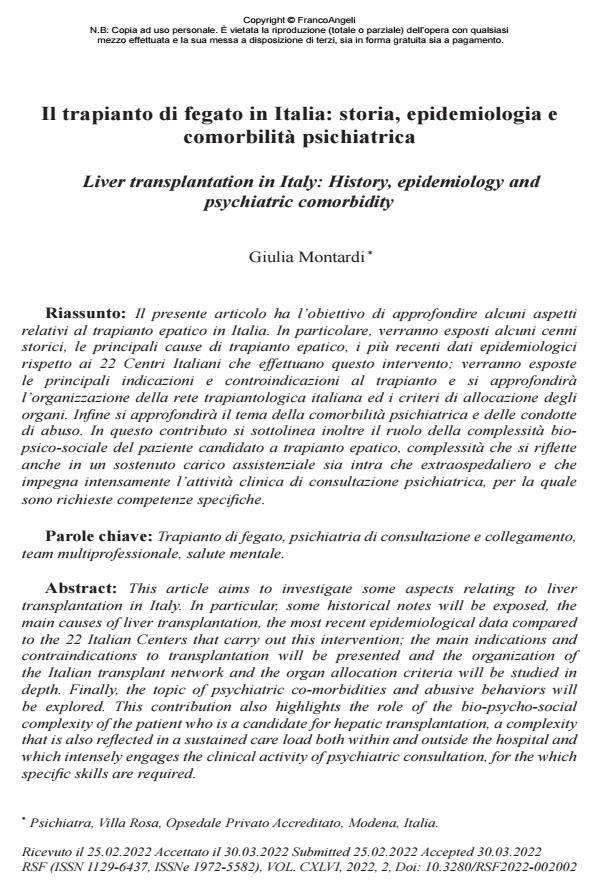Il trapianto di fegato in Italia: storia, epidemiologia e comorbilità psichiatrica
Titolo Rivista RIVISTA SPERIMENTALE DI FRENIATRIA
Autori/Curatori Giulia Montardi
Anno di pubblicazione 2022 Fascicolo 2022/2
Lingua Italiano Numero pagine 13 P. 11-23 Dimensione file 173 KB
DOI
Il DOI è il codice a barre della proprietà intellettuale: per saperne di più
clicca qui
Qui sotto puoi vedere in anteprima la prima pagina di questo articolo.
Se questo articolo ti interessa, lo puoi acquistare (e scaricare in formato pdf) seguendo le facili indicazioni per acquistare il download credit. Acquista Download Credits per scaricare questo Articolo in formato PDF

FrancoAngeli è membro della Publishers International Linking Association, Inc (PILA)associazione indipendente e non profit per facilitare (attraverso i servizi tecnologici implementati da CrossRef.org) l’accesso degli studiosi ai contenuti digitali nelle pubblicazioni professionali e scientifiche
Il presente articolo ha l’obiettivo di approfondire alcuni aspetti relativi al trapianto epatico in Italia. In particolare, verranno esposti alcuni cenni storici, le principali cause di trapianto epatico, i più recenti dati epidemiologici rispetto ai 22 Centri Italiani che effettuano questo intervento; verranno esposte le principali indicazioni e controindicazioni al trapianto e si approfondirà l’organizzazione della rete trapiantologica italiana ed i criteri di allocazione degli organi. Infine si approfondirà il tema della comorbilità psichiatrica e delle condotte di abuso. In questo contributo si sottolinea inoltre il ruolo della complessità bio- psico-sociale del paziente candidato a trapianto epatico, complessità che si riflette anche in un sostenuto carico assistenziale sia intra che extraospedaliero e che impegna intensamente l’attività clinica di consultazione psichiatrica, per la quale sono richieste competenze specifiche.
Parole chiave:Trapianto di fegato, psichiatria di consultazione e collegamento, team multiprofessionale, salute mentale.
Giulia Montardi, Il trapianto di fegato in Italia: storia, epidemiologia e comorbilità psichiatrica in "RIVISTA SPERIMENTALE DI FRENIATRIA" 2/2022, pp 11-23, DOI: